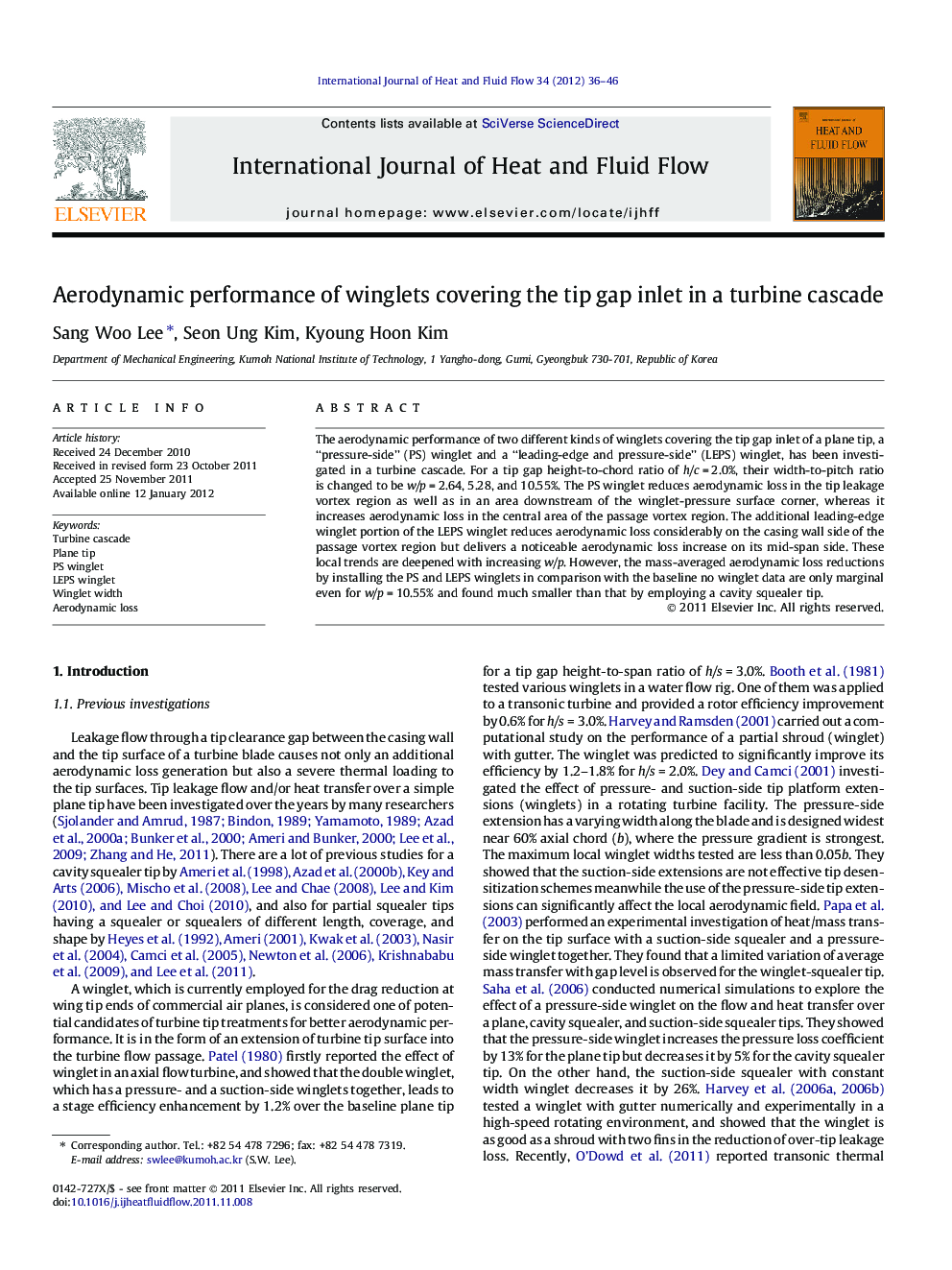| Article ID | Journal | Published Year | Pages | File Type |
|---|---|---|---|---|
| 655653 | International Journal of Heat and Fluid Flow | 2012 | 11 Pages |
The aerodynamic performance of two different kinds of winglets covering the tip gap inlet of a plane tip, a “pressure-side” (PS) winglet and a “leading-edge and pressure-side” (LEPS) winglet, has been investigated in a turbine cascade. For a tip gap height-to-chord ratio of h/c = 2.0%, their width-to-pitch ratio is changed to be w/p = 2.64, 5.28, and 10.55%. The PS winglet reduces aerodynamic loss in the tip leakage vortex region as well as in an area downstream of the winglet-pressure surface corner, whereas it increases aerodynamic loss in the central area of the passage vortex region. The additional leading-edge winglet portion of the LEPS winglet reduces aerodynamic loss considerably on the casing wall side of the passage vortex region but delivers a noticeable aerodynamic loss increase on its mid-span side. These local trends are deepened with increasing w/p. However, the mass-averaged aerodynamic loss reductions by installing the PS and LEPS winglets in comparison with the baseline no winglet data are only marginal even for w/p = 10.55% and found much smaller than that by employing a cavity squealer tip.
► We test aerodynamics of PS and LEPS winglets for three winglet widths. ► PS winglet reduces tip leakage loss but increases loss in the passage vortex region. ► Mass-averaged loss reductions by PS and LEPS winglets are marginal. ► The loss reductions are much smaller than that by a cavity squealer tip.
